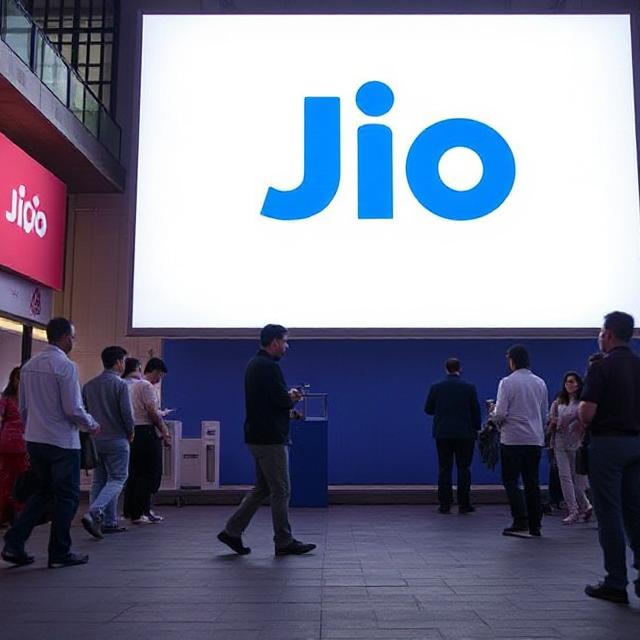Mukesh Ambani’s Business Empire: How Reliance Industries is Building a Parallel India in 2025
Introduction: The Architect of Modern India’s Economy
In the rapidly evolving landscape of Indian business, one name stands as a colossus – Mukesh Ambani. The chairman and managing director of Reliance Industries Limited has transcended traditional business boundaries to create what can only be described as a parallel economy within India. The performance of Ambani’s businesses gives him confidence that “Reliance will continue its stellar track record of doubling every 4–5 years,” showcasing the unprecedented scale of his ambitions.
Mukesh Ambani, chairman of Reliance Industries, one of India’s largest and most profitable private sector companies, discusses how clarity of goal and purpose, accompanied by the right people, can drive innovation, unlock extraordinary talent, and create impact. This vision has materialized into a business empire that touches virtually every aspect of an Indian consumer’s daily life.
The Foundation: Understanding Reliance Industries’ Transformation
Reliance Industries Limited, valued at more than $60 billion, represents far more than a traditional conglomerate. Under Mukesh Ambani’s leadership, the company has evolved from its petrochemical roots into a diversified digital powerhouse that spans telecommunications, retail, media, and emerging technologies.
RIL Chairman and Managing Director Mukesh D. Ambani is a chemical engineer from the Institute of Chemical Technology, Mumbai. He initiated Reliance’s backward integration journey – from textiles to polyester fibres and further on to petrochemicals and petroleum refining, then going upstream into oil and gas exploration and production. This strategic vision has now expanded into creating India’s most comprehensive digital ecosystem.
The Five Growth Engines: Ambani’s Strategic Pillars
Reliance Retail is among Top 5 company RIL under its umbrella, is sitting on what Mukesh Ambani calls his five growth engines – O2C, Retail, Jio, Media and Green Energy. These five pillars form the foundation of Ambani’s strategy to build a parallel India, where Reliance’s presence is ubiquitous across all consumer touchpoints.
1. Telecommunications Revolution: Jio’s Market Dominance
The Jio revolution fundamentally transformed India’s telecommunications landscape. Jio is India’s largest telecom network for customers and businesses. Jio offers Postpaid and Prepaid Connections, WiFi plans, Jioapps, & more. This telecommunications backbone serves as the foundation for Ambani’s digital empire, enabling seamless integration across all Reliance services.
The Jio ecosystem extends beyond traditional telecommunications, encompassing applications that directly compete with established market leaders. Get exciting additional benefits with prepaid plans such as access to JioTunes, JioCinema, JioTV, and more. Enjoy endless entertainment and stream your favourite video content, cricket matches, and more. This bundled approach creates a comprehensive digital lifestyle platform that keeps users within the Reliance ecosystem.
2. Retail Transformation: Building India’s Largest Retail Network
Retail Expansion: Reliance Retail is planning to open more stores and bring in more international brands. This will attract more customers and increase sales, contributing to Mukesh Ambani net worth. The retail division represents one of Ambani’s most visible challenges to existing market leaders across multiple categories.
Reliance began its ecommerce journey with AJIO in 2016, followed by JioMart in 2020 and added Tira in 2023. It also entered new areas through acquisitions such as epharmacy Netmeds, Urban Ladder, Just Dial, Milkbasket, lingerie maker Clovia and Alia Bhatt’s D2C brand Ed-a-mamma between 2020 and beyond, demonstrating the systematic approach to building comprehensive retail dominance.
Sector-by-Sector Analysis: Reliance vs. Market Leaders
Digital Commerce and E-commerce
JioMart vs. BigBasket/Amazon Fresh India’s online shopping destination for Mobiles, Electronics, Grocery, Fashion, Home & Kitchen, Furniture, Jewellery, Beauty, and more. Great Offers. Low Prices. Easy Returns. Pay on Delivery. Top Brands. JioMart’s comprehensive offering directly challenges established e-commerce players by providing integrated online-to-offline retail experiences.
Ajio vs. Myntra/Flipkart Fashion The fashion e-commerce space has become a critical battleground where Ajio leverages Reliance Retail’s physical infrastructure to provide faster delivery and returns, creating competitive advantages over pure-play digital platforms.
Media and Entertainment Consolidation
February 2024 saw Ambani’s RIL enter into an agreement with Indian media company Viacom18 and American entertainment giant Disney to create a joint venture, valued at $8.5 billion, forming one of India’s leading media companies. This strategic merger represents one of the most significant developments in India’s media landscape.
The recent merger demonstrates Ambani’s aggressive approach to market consolidation. Hotstar and JioCinema, two widely used video streaming apps in India, have merged into JioHotstar. JioStar, a joint venture between Reliance-owned Hotstar and JioCinema creates a dominant position in India’s streaming market, directly challenging international players like Netflix and Amazon Prime Video.
The chairman of Reliance Industries is keen on creating a synergy of telecom, retail and media businesses never seen before, indicating the strategic integration that sets Reliance apart from traditional single-sector competitors.
Financial Services Expansion
The emergence of Jio Financial Services represents Ambani’s entry into India’s rapidly growing fintech sector. By leveraging the existing Jio customer base and Reliance Retail’s merchant network, Jio Financial aims to create a comprehensive digital payments and lending ecosystem that competes directly with established players like Bajaj Finance and emerging fintech companies.
Beauty and Personal Care
Tira’s launch in 2023 marked Reliance’s direct challenge to Nykaa’s dominance in India’s beauty e-commerce market. By combining online presence with Reliance Retail’s physical store network, Tira creates an omnichannel beauty shopping experience that traditional pure-play digital platforms struggle to match.
Healthcare and Pharmaceuticals
The acquisition of Netmeds positioned Reliance as a significant player in India’s e-pharmacy sector, directly competing with PharmEasy and other established platforms. This move aligns with India’s growing digital health adoption and Reliance’s strategy to capture healthcare spending through integrated digital solutions.
The Digital Infrastructure Advantage
The browser promotes Jio apps like JioMart, JioCinema, and JioNews. More traffic = more revenue. In the long term, JioCoins may become a form of digital currency or loyalty points. This integrated approach demonstrates how Ambani is building not just individual businesses, but an interconnected digital ecosystem where each component strengthens the others.
The development of JioSphere as a potential web browser indicates Ambani’s ambition to control even the digital gateway through which Indian consumers access the internet. This level of vertical integration creates unprecedented competitive advantages while building higher barriers to entry for competitors.
Strategic Acquisitions and Market Consolidation
Ambani’s strategy involves systematic acquisition of complementary businesses to build comprehensive market presence. The acquisitions of Urban Ladder, Just Dial, Milkbasket, and other specialized platforms demonstrate a methodical approach to eliminating competition while acquiring customer bases and technological capabilities.
These acquisitions serve dual purposes: they eliminate potential competitors while providing Reliance with specialized expertise and customer relationships that would take years to build organically. This approach accelerates market dominance while creating synergies across the broader Reliance ecosystem.
Technology Integration and Innovation
The integration of 5G technology across Jio’s network creates the foundation for advanced digital services that competitors struggle to match. This technological infrastructure advantage enables Reliance to offer superior user experiences across all digital touchpoints, from streaming services to e-commerce platforms.
Reliance Industries Limited is a Fortune 500 company and the largest private sector corporation in India. Our activities span hydrocarbon exploration and production, petroleum refining and marketing, petrochemicals, retail markets, new energy, and telecom (Jio True 5G). This diverse technological foundation provides competitive advantages that pure-play digital companies cannot replicate.
Market Impact and Competitive Response
The aggressive expansion of Reliance across multiple sectors has forced established market leaders to rethink their strategies. Traditional retailers, telecom operators, and digital platforms now face competition from an integrated ecosystem rather than individual companies.
This ecosystem approach creates unique challenges for competitors who excel in single sectors but lack the integrated infrastructure that Reliance provides. Consumers increasingly prefer the convenience and integration that comes from using interconnected services within the Reliance ecosystem.
Future Growth Trajectories
Discover Mukesh Ambani companies list in 2025, including listed companies, share information, and details about his businesses across sectors like telecom, energy, and retail. The continued expansion indicates that Ambani’s vision extends far beyond current achievements.
The green energy initiative represents Reliance’s next major growth frontier, potentially creating another sector where the company could achieve dominant market position. This diversification into renewable energy aligns with global trends while creating additional revenue streams that complement existing businesses.
Economic and Social Implications
The creation of this parallel economy has significant implications for India’s overall economic development. Reliance’s integrated approach drives digital adoption, creates employment opportunities, and provides consumers with comprehensive digital services that enhance daily life convenience.
However, this concentration of market power across multiple sectors also raises questions about market competition and consumer choice. The success of Ambani’s strategy demonstrates the effectiveness of integrated business models in emerging markets, while highlighting the challenges faced by specialized competitors.
Global Comparisons and Competitive Positioning
Ambani’s strategy bears similarities to global technology conglomerates like Amazon, Google, and Chinese super-apps, but operates within the unique context of India’s developing economy. This approach leverages India’s digital transformation while building comprehensive market presence across traditional and emerging sectors.
The integrated model provides Reliance with competitive advantages that international companies entering India struggle to replicate, particularly the combination of physical infrastructure, digital capabilities, and local market understanding.
Investment and Valuation Implications
In 2024, he acquired a Boeing 737 Max 9 aircraft, becoming India’s first private owner of the aircraft. Purchased at about ₹1000 crores, demonstrating the scale of wealth generation from this integrated business strategy.
The valuation implications of this integrated approach extend beyond traditional sector-specific metrics, as synergies between different business units create additional value that competitors cannot easily replicate or challenge.
Challenges and Risk Factors
Despite the success of this integrated strategy, Reliance faces significant challenges including regulatory scrutiny, intense competition from international players, and the complexity of managing diverse business operations. The concentration of operations across multiple sectors also creates risks if economic conditions change or specific sectors face disruption.
Managing customer expectations across such a diverse portfolio requires consistent service quality and continuous innovation, particularly as consumers become more sophisticated and demanding in their digital experiences.
Leadership Transition and Future Sustainability
Mukesh Ambani stepped down from the position of chairperson of Reliance Retail and handed over the job to his daughter Isha Ambani Piramal. Ambani announced it during the 45th Reliance AGM, in 2022. This leadership transition indicates planning for long-term sustainability of the business empire.
The involvement of the next generation in key leadership roles suggests that the integrated business strategy will continue evolving, potentially expanding into new sectors and markets as India’s economy continues developing.
Conclusion: The Transformation of Indian Commerce
Mukesh Ambani’s vision of building a parallel India has materialized into one of the world’s most comprehensive integrated business ecosystems. From telecommunications and retail to media and financial services, Reliance’s presence has become ubiquitous in Indian consumers’ daily lives.
This transformation represents more than business success; it demonstrates the potential for integrated digital ecosystems to drive economic development in emerging markets. As India continues its digital transformation, Ambani’s Reliance Industries stands as both catalyst and beneficiary of this unprecedented change.
The success of this parallel economy model provides insights for global businesses seeking to understand how integrated digital ecosystems can create sustainable competitive advantages in developing markets. Whether this model can be replicated in other contexts remains to be seen, but its impact on India’s economy and society continues growing with each passing year.
The future of Indian commerce increasingly looks like the vision Mukesh Ambani has systematically built – integrated, digital, and comprehensive. As competitors adapt and respond, the parallel India that Reliance has created will likely continue evolving, setting new standards for what integrated business ecosystems can achieve in the modern economy.








